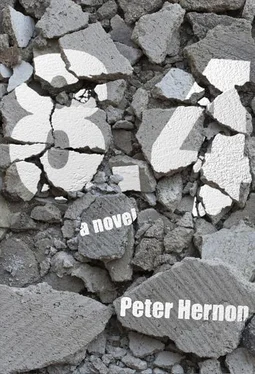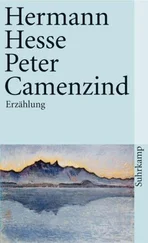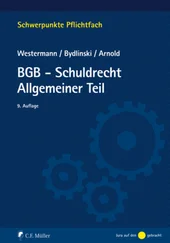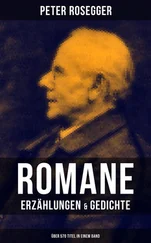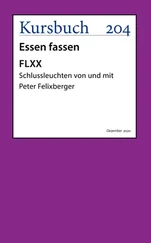“Here it comes,” Elizabeth said. “Yes!”
She felt herself lifted up. It was like an ocean swell washing against her legs in a strong surf, causing her to sway on her feet but not fall down. Two distinct ground waves rolled past them, rippling the trees and tall grass.
They were ten yards from a stream that trickled along the base of the limestone hills. Clear as glass only moments earlier, the surface of the water suddenly shimmered.
“It fired!” Atkins shouted.
NEAR BENTON, KENTUCKY
JANUARY 20
4:30 P.M.
LAUREN MITCHELL HAD BEEN GIVEN A PERSONAL escort to drive her home—four Army paratroopers in two Humvees. In the two hours since they’d left the Golden Orient, they’d covered less than twenty miles on unmarked country roads. Following Lauren’s directions, they’d frequently plowed across sodden fields and pastures to save time.
Lauren had wanted to be back with her grandson when the bomb exploded. She didn’t make it.
Her driver, a nervous but alert corporal, pulled over on the shoulder of a muddy road a few seconds before zero hour.
“Maybe we better get out of the vehicle,” he said.
Unsure what to expect, they were well within the thirty-to forty-mile radius for the bomb’s maximum seismic effect.
“It should hit any second now,” the soldier said, looking at his watch.
They were on a steep hillcrest with a view of Kentucky Lake in the distance, the gray-blue water visible through a gap in the trees. Another five miles, and Lauren would have been home. She wondered how Bobby was doing and longed to be back with him.
“Listen!” one of the soldiers shouted.
The sound of muffled thunder rolled along the ridges. The bomb had gone off.
“It’s gonna wash right over us,” the corporal said, looking back toward a narrow valley they’d just driven through. The hills were swaying. The ground was moving toward them in waves.
“Get away from the vehicles!” the corporal yelled. The Humvees had begun to rock up and down on their axles. They ran, half fell, down a grassy hill that sloped away from the road. The first wave staggered them, then the second wave knocked them off their feet. They fell hard.
“Jesus,” the corporal said, trying to stand and falling on his back as the ground kept shaking.
Lauren sat up and dug her hands into the wet grass, trying to hold on to something, afraid she’d be thrown into the air. She stared out toward the lake. The water momentarily seemed to pull back from shore. She watched big waves whip up as the shaking intensified. Monster waves.
After a few minutes, the ground quieted again.
Lauren picked herself up, got her balance, and hiked back to the road.
The corporal followed her. “I think we can drive now, ma’am,” he said. “Let’s get you home.”
Lauren shook her head and said, “Thanks, but I’ll walk the rest of the way.” She could be home in an hour if she put her mind to it. She didn’t want to be caught in one of those Humvees if the road turned liquid or a trench opened up beneath them. Two of the paratroopers followed her on foot. The others drove.
The Mississippi Valley might keep shaking for days, Lauren thought. Sooner or later it would stop for good and when it did, they’d start rebuilding their marina. That was her unwavering plan. This was her country and her grandson’s. They were going to survive this.
NEAR KALER, KENTUCKY
JANUARY 20
4:31 P.M.
JUST AS BOOKER HAD PLANNED, THE PLASTIC explosives detonated deep in the Golden Orient, caving in all four major shafts on Level 8. Roofs and tunnels collapsed on themselves as the mine was sealed.
Seconds later and right on schedule, the MK/B-61 exploded. The capacitors flashed their charge. The electrical circuit closed, setting off the network of detonators. The blocks of high explosives that Booker had painstakingly shaped at the Pantex plant in Texas all fired, crushing the plutonium core in the bomb’s primary. At the moment of maximum compression, a small fireball of fission—boosted by the infusion of tritium and deuterium gas—flooded the bomb’s secondary component, the part containing lithium deuteride uranium. In the barrage of radiation from the fireball, the secondary imploded, setting off the thermonuclear explosion.
Deep in the mine, the bomb’s supercharged energy was released, blasting the temperature to about ten million degrees. The pressure spiked at a thousand times that of the earth’s atmosphere. The same kind of white-hot, incandescent gas that forms the core of a star blasted outward, carving a dome-shaped cavity the size of a tenstory building. During the last few preshocks, the deep fissure at the bottom of the mine had already begun to close. The explosion hastened the process, sealing the fissure as great sheets of molten rock collapsed into it.
Shock waves radiating from the core fractured the surrounding rock and liquefied it. The explosion created a nuclear earthquake that unleashed swarms of seismic waves rippling through the earth’s crust. The P waves traveled through the rock as sound waves, a series of rapid compressions and dilations. These were followed by the much slower-moving S waves. There was an abundance of Love waves, converted S waves trapped within the earth’s surface layers.
As the bomb exploded, the ground directly above the blast site billowed up like a sail suddenly filled with a strong gust of wind. Then the ground settled again, forming a concave shaped subsidence crater on the surface one thousand feet in diameter. More settling would follow as the hot cavity continued to cool.
The mine’s tall skip shaft and man shaft towers collapsed, shaken apart, their heavy timbers crashing through the metal building that housed the main entrance.
No cloud of radioactive dust escaped.
ATKINS was soon on the radio with Guy Thompson and the team of seismologists manning the red shack control center two miles farther to the west. They were monitoring the array of strong-motion seismographs and other instruments positioned near ground zero. The equipment had been geared up to make a quick determination of the bomb’s yield by measuring the amplitudes of the P waves and the S waves.
Thompson had lost his scientific detachment, the ability to consider disturbing facts analytically without losing his composure.
He was terrified.
The ground had gone into spasm. The bomb, following predictions, had released strain energy comparable to an earthquake in the magnitude 6.5 range and exactly in the bull’seye. The nuclear shock waves were directed right at the western end of the newly discovered Caruthersville Fault, its wide point of intersection with the fault from the 7.1 quake and the northernmost arm of the New Madrid Seismic Zone, the place where the greatest stress was likely to be concentrated. The maximum band of seismic energy had radiated about forty miles, a little more than they’d anticipated.
“We’re showing lots of Love waves,” Thompson reported. That was exactly what they’d wanted. Love waves were a good indicator that tectonic strain energy in the ground was being released as the deep rock fissured and cracked. The number of Love waves moving across the surface of the ground was considered a measure of the amount of energy released.
What they hadn’t anticipated was the flurry of powerful aftershocks that inexplicably broke out along the entire length of the Caruthersville Fault. They were also firing with unprecedented rapidity along other segments of the NMSZ.
The first aftershock—nearly as large as the main event—followed within thirty seconds, a quake that measured a magnitude 6.
By then, the ground had been shaking intermittently for more than three minutes.
Читать дальше
